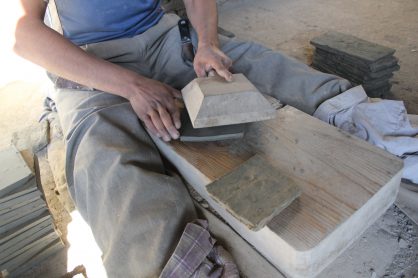
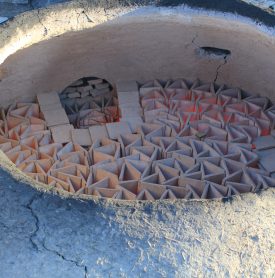
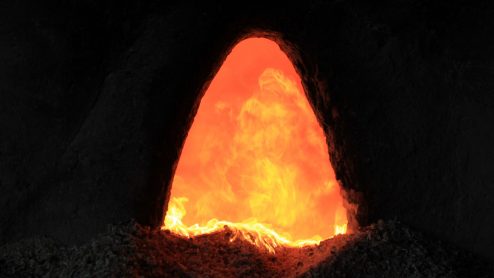
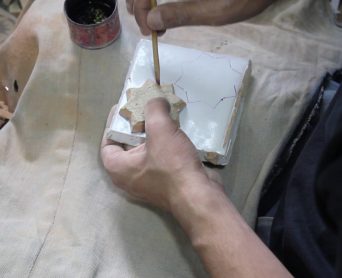
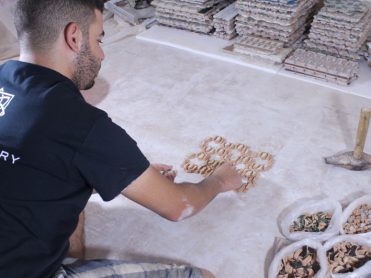
Zellij is similar to what most American’s would call mosaics. Pieces are cut very precisely from monochromatic enameled tiles after being baked. The techniques used to create zellij tiles are complex and unique. Maallems need not only the materials and tools to create, but also a great deal of specialized skills and experience. Maallems create brilliant, multicolored, geometric galaxies that infuse style and sophistication into the walls and floors of palaces, hammams, fountains, swimming pools and home interiors. Designs seamlessly combine the elements of earth, water, fire and wind, to arrive at a junction of beauty synonymous with the ancient tradition of mosaic making. The earth used to make the Zellij range of tiles is specific to the region of Fez, Morocco. Earth from other areas just doesn’t create the same high quality result. Tiles made elsewhere are in fact impossible to cut.
Earth is mixed with water and kneaded by hand for some time before being shaped into tiles. The tiles are 4 inches on each side and approximately half an inch thick. The tiles are dried inthe sun before the enameling and baking process begins. A special oven is used which is treated by whichever fuel is available – usually olive pits. Each tile is of only one color, and each color needs to be baked at a specific temperature. Following the baking process, the tiles are removed from the oven, and sorted. Apprentices then draw the shapes of the mosaic pieces tobe cut directly on the tile. They use a zellij template to carefully fit as many pieces as possible upon each tile. The Moroccan tile is then brought to the cutter, who sits cross-legged in front of a simple workbench, which is merely a pile of stones. A piece of iron or a harder stone is used as a support for the tile that is being cut. The tool used to cut the tile looks similar to a hammer, but is larger and wider. It is carefully sharpened at each end. The weight and size
of the cutting tool are in great contrast to the small and delicate pieces of the Moroccan tile. Once the zellij pieces are expertly cut, the edges are filed if necessary, and they are placed inbaskets according to their shape and color. A zellij craftsman can cut up to around 400 pieces per day.

Verify your email address.
You will receive an email with a link that you will need to access to activate your Zellij Gallery account.

Thank you! Please check your email to reset your password.